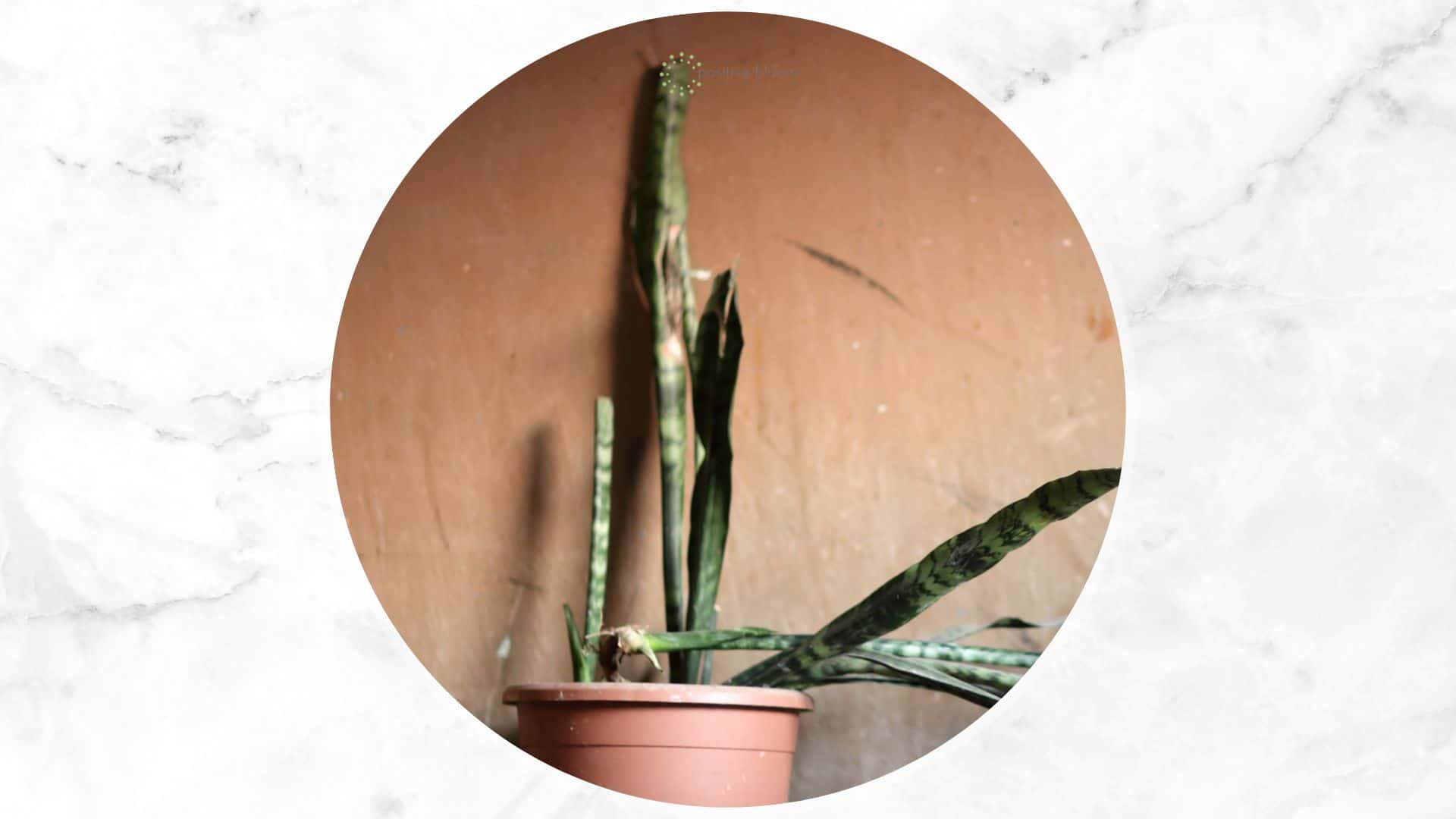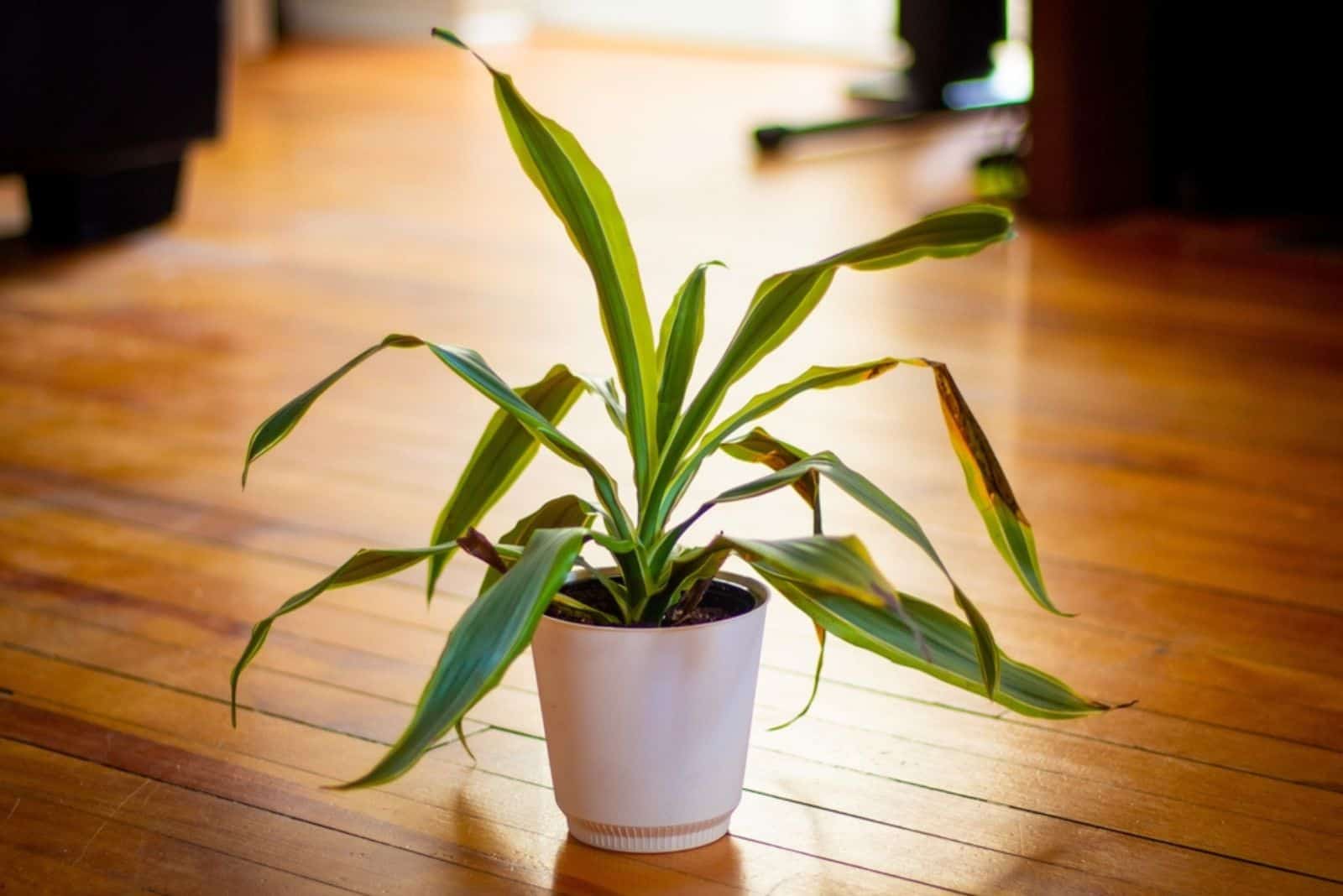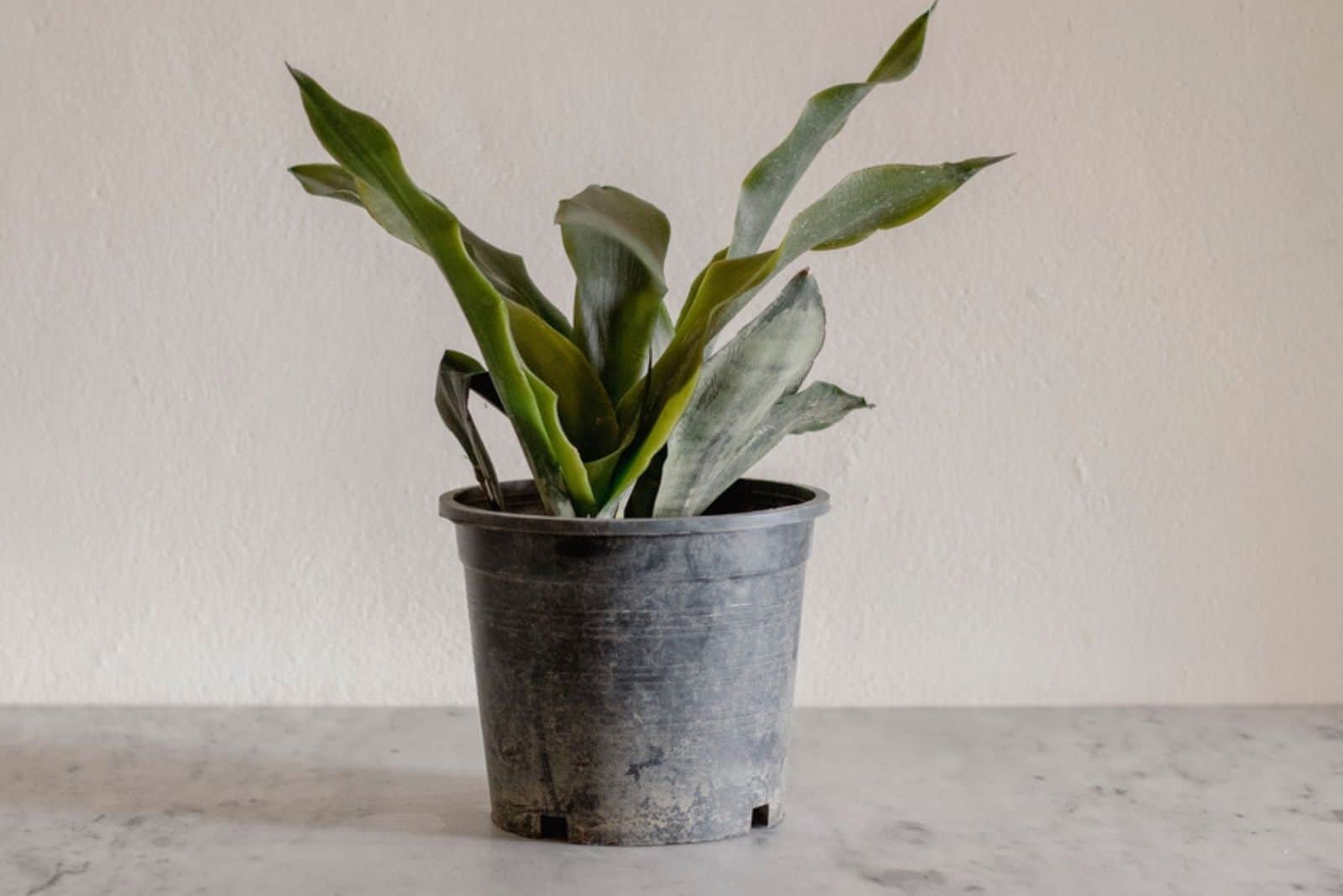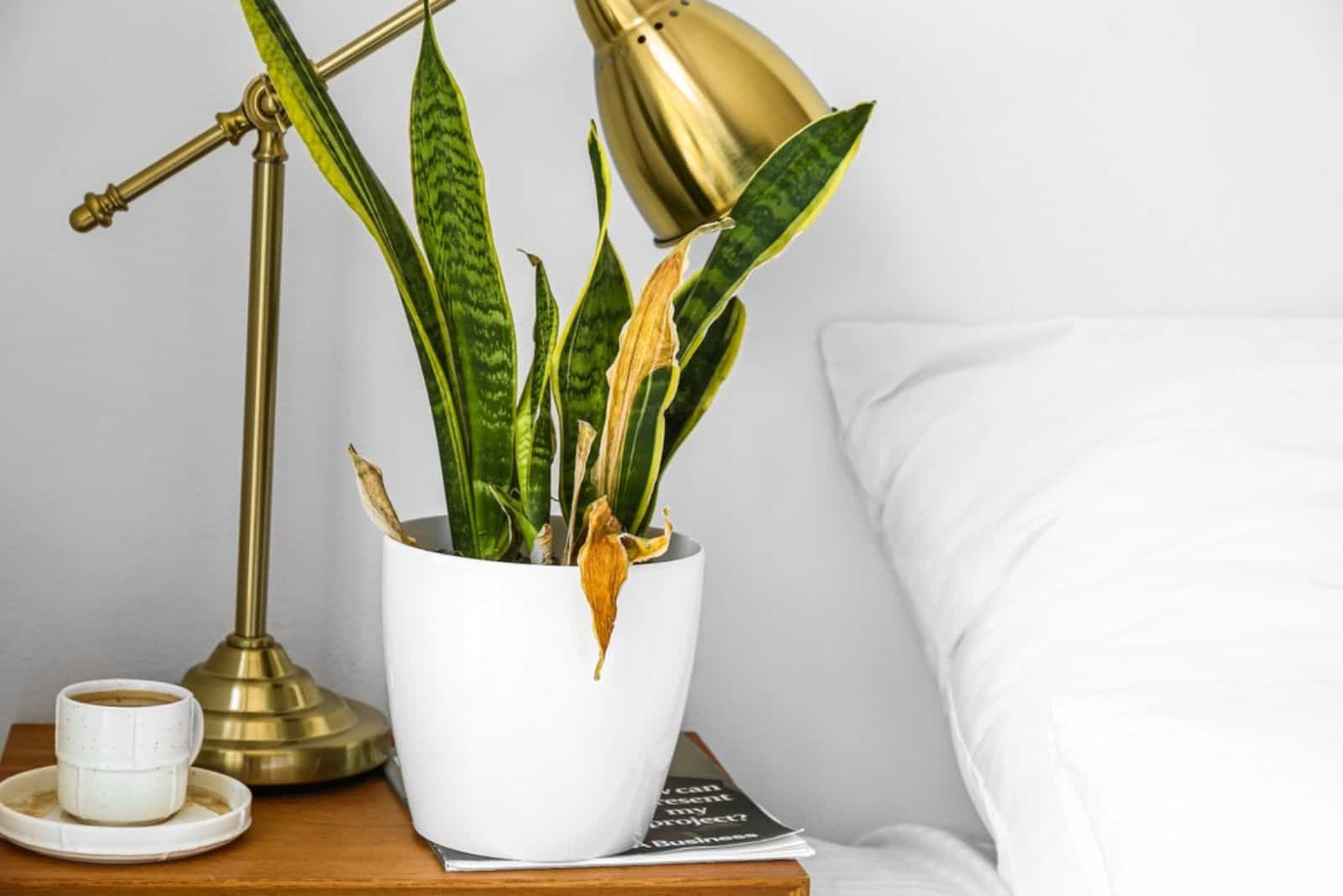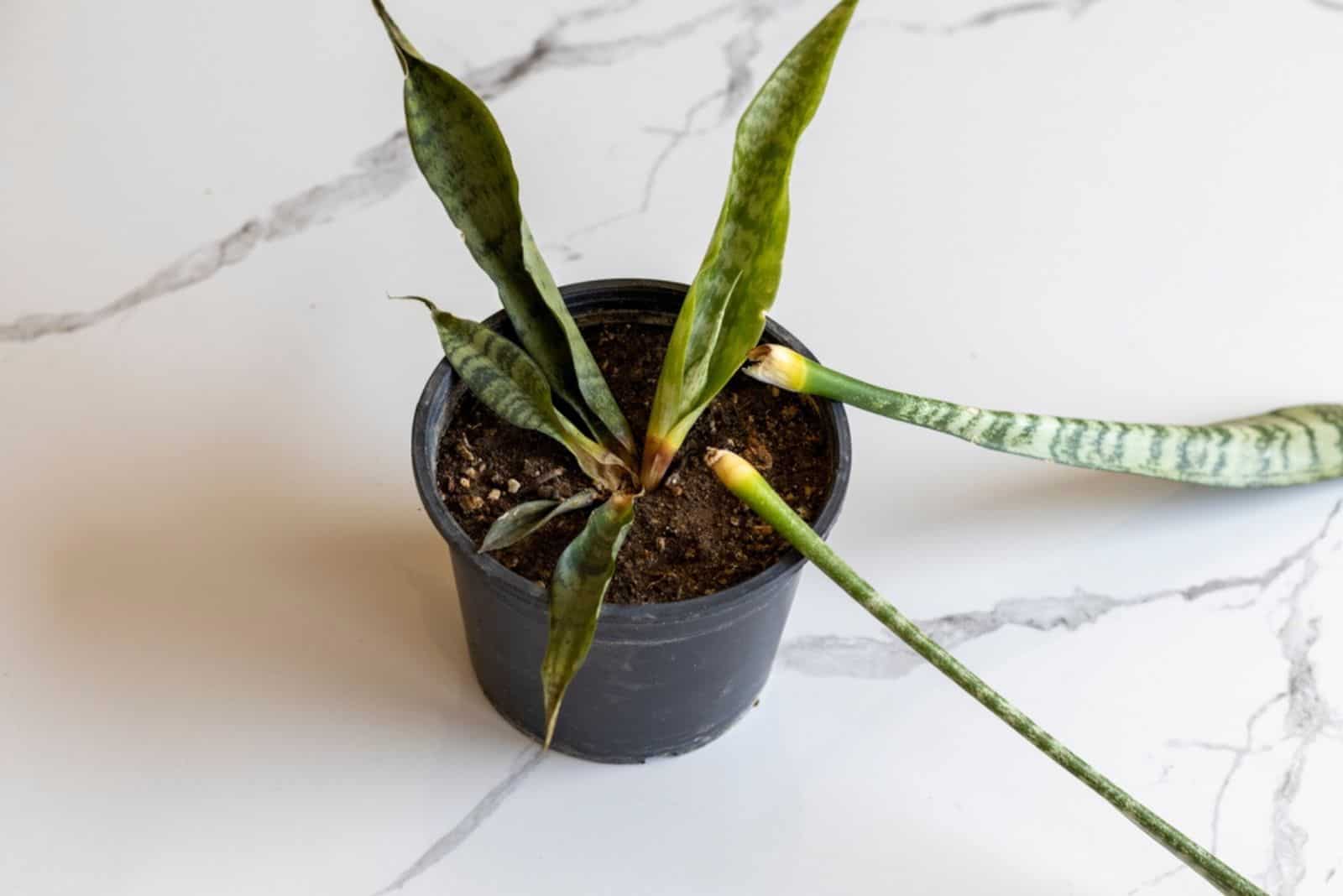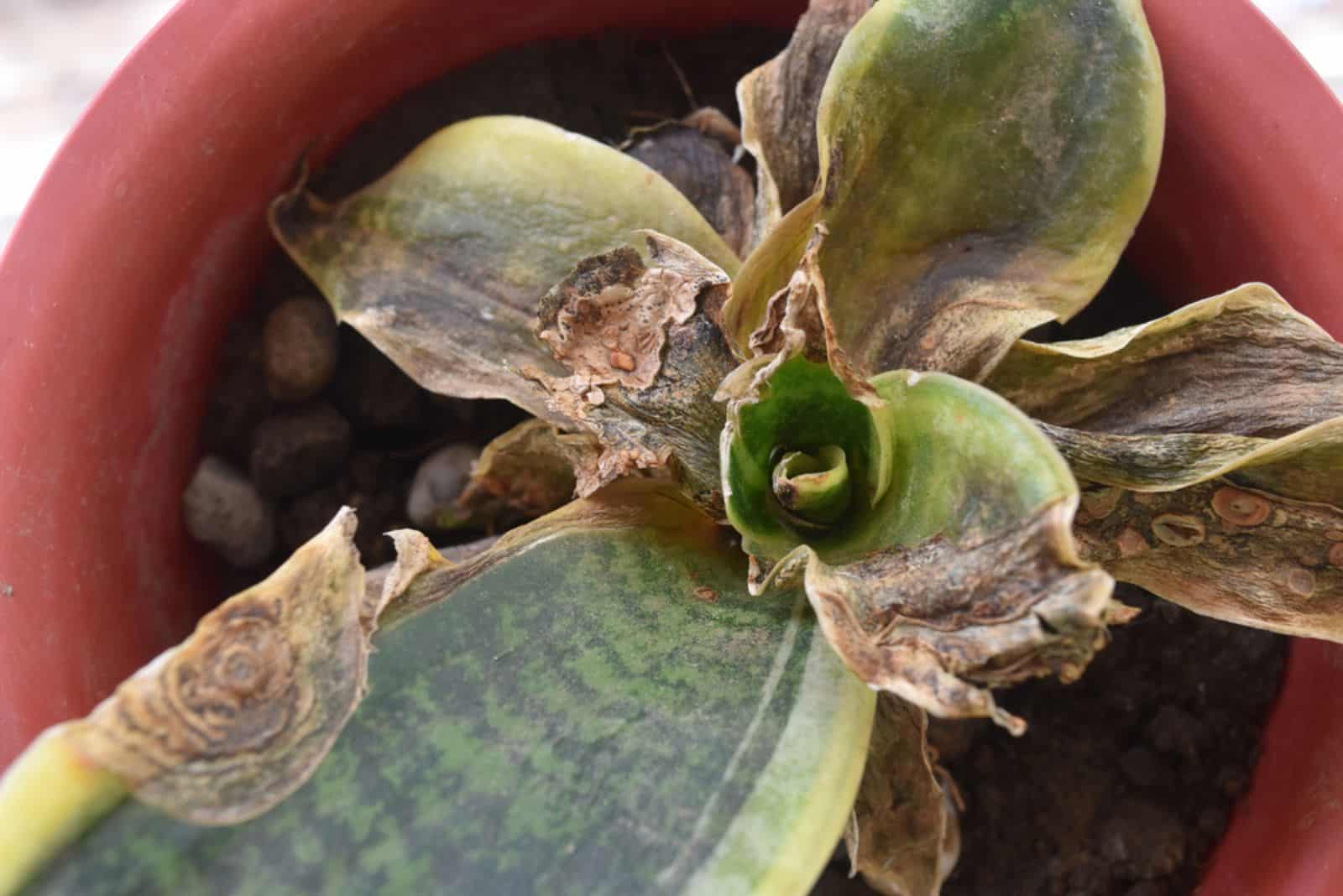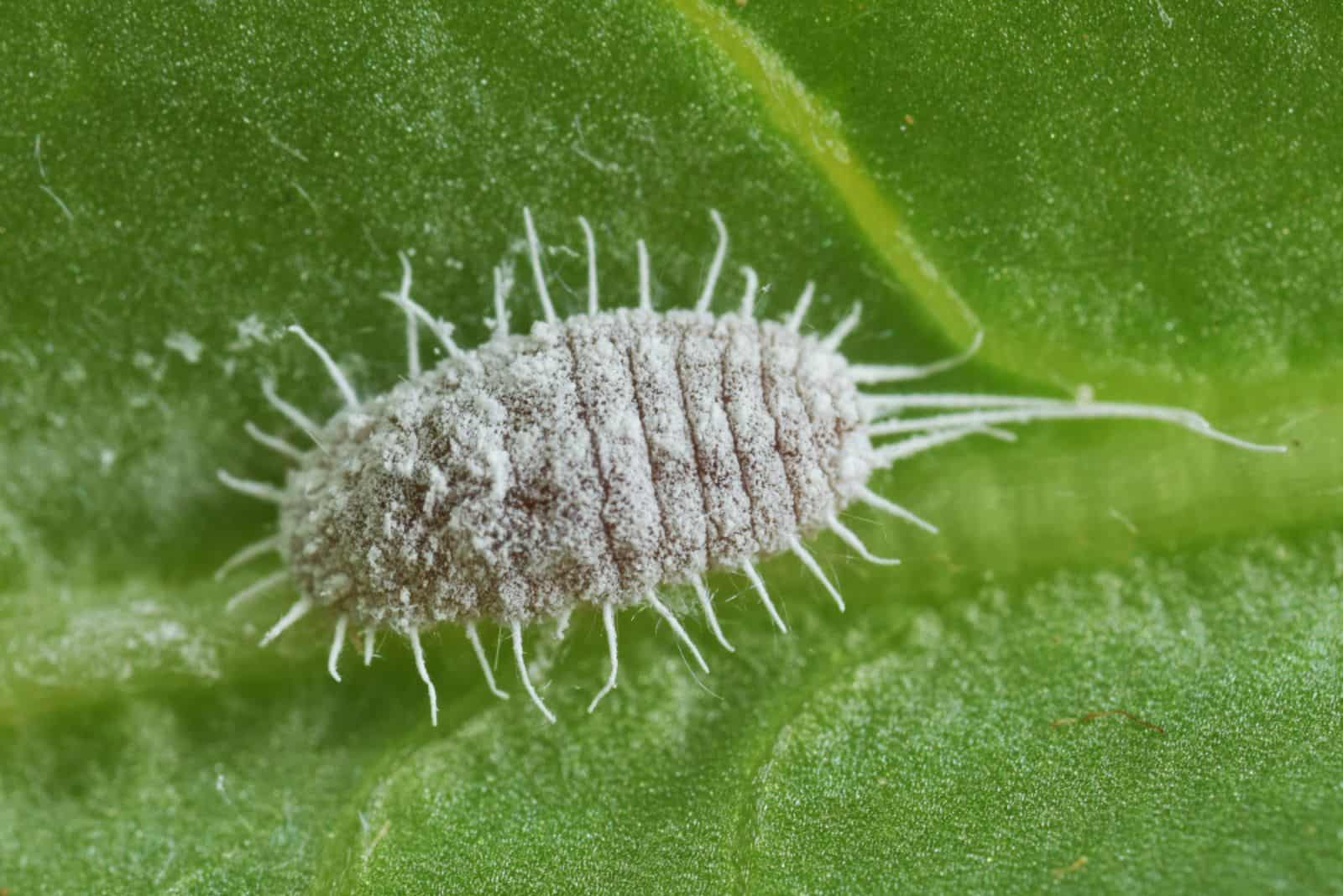Deformation and discoloration are the major indicators of a dying snake plant. If you are facing this issue, this article will tell you all you need to know to fix it and make sure it doesn’t happen again.
Our main goal is to answer two questions: why is your snake plant dying and how can you save it?
Don’t worry, I’m also a snake plant parent and I know exactly how you feel. Since I have had the same problem, I can show you how to recognize the cause and how to treat it.
Let’s dive straight in!
What To Do First
Well, the first thing is not to panic. Your first step should be to perform an inspection. This includes checking all plant parts and the surrounding environment.
Why is this important? The most common causes of a dying snake plant are overwatering, low light, low humidity, underfeeding, low temperatures, infections, and pest infestation.
These conditions lead to changes in the appearance of your snake plant. If the plant displays any of the following signs (or more than one), its life is in danger!
• Yellow foliage
• Brown foliage
• Wilting
• Mushy soil with an unpleasant smell
• Leaves withering
• Leaves curling
• Mushy and black/brown roots.
Let’s now discuss the causes, common symptoms for each cause, and, of course, how to fix them!
Cause 1: High Moisture Content In The Growing Medium
We’ll start with the most frequent cause of dying plants. High moisture content from overwatering is the leading cause of a dying snake plant.
Contrary to popular belief, overirrigation doesn’t refer to adding a lot of water to snake plant soil at once.
Major factors that contribute to overwatering are not waiting for the soil to dry out and incorrect growing conditions.
The symptoms of overwatering in snake plants are yellowing, browning, drooping, soft leaves, and soggy soil.
I faced this issue a couple of years ago. My snake plant suddenly started drooping, and my first thought was that my green buddy lacked light.
When I touched the leaves, they were really soft. It was evident that my Sansevieria plant was overwatered.
Best Solution: Allow Your Snake Plant To Dry Well
I got a lot of advice on how to save an overwatered Sansevieria, such as changing the watering schedule, adjusting the conditions, and so on.
However, only one thing worked at that point; I allowed my snake plant to dry out.
Be careful with this because you can do more harm than good if you don’t follow the right procedure.
Here are the dos and don’ts:
Dos:
• Put your snake plant in a spot with bright indirect light.
• Set the thermostat to approximately 70 degrees Fahrenheit.
• Check soil moisture every day.
• Monitor regularly. If you don’t see any improvement or if the condition is worse, react quickly. You might be dealing with a fungal infection caused by overwatering. I’ll discuss this condition in the following sections.
Don’ts:
• Never expose the plant (any snake plant variety) to direct sunlight to enhance drying.
• Never increase temperatures to accelerate the water evaporation rate.
Your snake plant will most likely take 2 weeks to dry out and show signs of improvement.
Here are some great tips for watering your snake plant:
Cause 2: Not Enough Sun Exposure
Lack of light in snake plants leads to death! The explanation is simple; no light = no photosynthesis.
I’m sure you’ve read many times that these lovely plants can tolerate different light levels, but although they do respond well to low light, low light and no light are two different things!
Symptoms of a lack of light in snake plants include browning of the leaf tips, drooping, legginess, and absence of new growth.
Stunted growth in Dracaena plants may be a consequence of many conditions, but if it comes along with the symptoms described above, your plant needs more sun!
Best Solution: Relocate Your Snake Plant
The easiest solution to low light is to relocate your plant to somewhere it can get more light.
The best place to put your snake plant is near a west-facing window so it will have enough light to flourish without being exposed to direct sunlight.
I rotate my snake plant from time to time so each side receives natural light.
If you don’t have a spot where your Sansevieria plant can receive enough light, consider using artificial lights. (1)
Some growers avoid using these because they can be expensive, but they’re a long-term investment and definitely worth it!
Cause 3: Air Moisture Is Too Low
Another possible reason your Mother-in-law’s tongue plant is dying is low humidity.
The average humidity in households is 30%, which isn’t enough for snake plants in most cases.
The symptoms of lack of humidity in snake plants include dry soil, yellowing, brown leaf tips, curling, wilting, and wrinkling.
To know if humidity is the issue, you need to measure it.
The hygrometer is a device used for this purpose. It’s not pricey and can be a lifesaver in plant cultivation.
If the hygrometer shows humidity of less than 40%, you have the culprit.
Best Solution: Install A Humidifier
I’ll get straight to the point, DIY methods for increasing humidity won’t work in this case! You don’t have much time to experiment because your snake plant could suffer even more damage.
I highly recommend purchasing and installing a humidifier.
I know it’s a little bit expensive, but if you are growing (or intend to grow) more plants, this is one of the best things to have.
Set the humidifier between 40 to 50% and let your snake plant adjust.
A healthy, green, and beautiful plant is just around the corner!
Cause 4: Underfeeding
Your snake plant may be dying because it’s hungry!. You’ll read many times that these plants do well without supplemental feeding, but I strongly disagree.
When was the last time you fertilized your Sansevieria plant? If you can’t remember or it was a long time ago, you have the culprit.
Stunted growth and yellow leaves are the most frequent symptoms of nutrient deficiency in snake plants.
Best Solution: Fertilize Your Snake Plant
Make lunch for your green buddy! I’ll show you how I feed my snake plant.
I use a 10-15-10 liquid formula, and dilute 14 drops of formula in 8 cups of water. Make sure to mix everything well to prevent fertilizer drops from sitting at the bottom.
Put your Sansevieria in a sink, preferably on a stopper because the solution will be coming out of the drainage holes.
Gradually pour the solution over the soil to allow each root to absorb enough food.
There’s no need for irrigation during the next two weeks after feeding.
Cause 5: Fungal Infection
Fungal infection is another possible cause of a dying snake plant. If the soil is waterlogged, a fungus species such as Phytophthora or Pythium (2) may settle in.
These are the two most common fungi that cause root rot.
If your snake plant has root rot, the leaves will be yellow and brown, the soil will be mushy and smell terrible, and the roots will be black or brown.
Best Solution: Repot Your Snake Plant
The only way to save your Sansevieria from root rot is to repot it.
Here’s how to do it:
1. Tilt the container to one side and gently take your Sansevieria out.
2. Clean the root system of the surrounding soil. I have to warn you that some roots will fall off as soon as you touch them. Don’t panic because these roots are dead and you would remove them anyway.
3. Eliminate other diseased roots with a sanitized pair of scissors.
4. This step is optional, but I always apply fungicide to the root system after I remove the diseased roots. This prevents further fungal growth.
5. Put your snake plant in a new container filled with fresh growing substrate.
Here’s a great way to get rid of a severe root rot infection in a snake plant:
Cause 6: Freezing Temperatures
The temperature tolerance of snake plants goes down to 40 degrees Fahrenheit. If you keep your plant at lower temperatures than this, it’s dying because it’s frozen.
Plant cells stop operating in extreme temperatures, so the leaves of your snake plant don’t have access to nutrients and water anymore.
Curly, yellow, and mushy leaves are the most frequent symptoms of extremely low temperatures.
Best Solution: Gradually Increase Temperatures
Warm your green buddy up!
You need to introduce your snake plant to higher temperatures gradually to avoid stress.
For instance, if the temperature in the room where you keep your snake plant is 35 degrees Fahrenheit, set the thermostat to 45 degrees. Slightly increase the temperature every day until it reaches somewhere between 65 and 85 degrees.
Cause 7: Infestation
Annoying pests may be the culprits again! I say again because they cause so many issues with plants in general.
The two most frequent pests that lead to a dying snake plant are mealybugs and spider mites.
Stunted growth, leaf necrosis, leaf discoloration, and wilting are the most common symptoms of pest infestation in snake plants.
Let’s first discuss how to recognize a mealybug infestation. If you notice a white substance in concentric circles on the leaves of your snake plant, mealybugs are to blame.
If your Sansevieria has a spider mite infestation, you’ll notice webbing, especially at the leaf base. These pests are closely related to spiders, so webbing isn’t surprising.
Best Solution: Apply Organic Pesticides
Although chemical treatment works faster when it comes to pest control, organic solutions are a much better choice.
The last thing your snake plant needs at this point is chemicals.
The two best organic pesticides are neem oil concentrate and insecticidal soap.
Here’s how to use these pesticides on your snake plant:
1. Prepare the solution following the instructions on the packaging.
2. Take a soft cloth and dip it in the solution.
3. Gently rub each leaf of your Sansevieria, and don’t skip the undersides.
4. Repeat this procedure biweekly until each of these annoying creatures is gone.
Here’s an excellent method for treating mealybugs with an insecticidal soap and rubbing alcohol solution:
Cause 8: Bacterial Infection
Bacterial infections in snake plants are rare but not unheard of. The prevalent infection is soft rot caused by Erwinia carotovora. (3)
The most common symptom of this infection in Sansevieria plants are portions of black or brown tissue.
Best Solution: Discard The Plant
I know this is the last thing you want to hear, but you need to discard your snake plant if it has a bacterial infection.
This is a serious condition and there’s no cure. Put the Dracaena plant, along with the soil and container, in a tightly sealed plastic bag and dispose of it in a trash bin.
Never reuse the growing substrate or add the infected plant to a compost pile!
Wrapping Up
Remember the two questions from the beginning of the article? Why is your snake dying and how to save it?
Well, now you have all the possible answers!
Using our guidelines, closely inspect your Sansevieria, determine the cause, and save your prized plant – you can do it!
Until next time!
[sp_easyaccordion id=”18758″]

